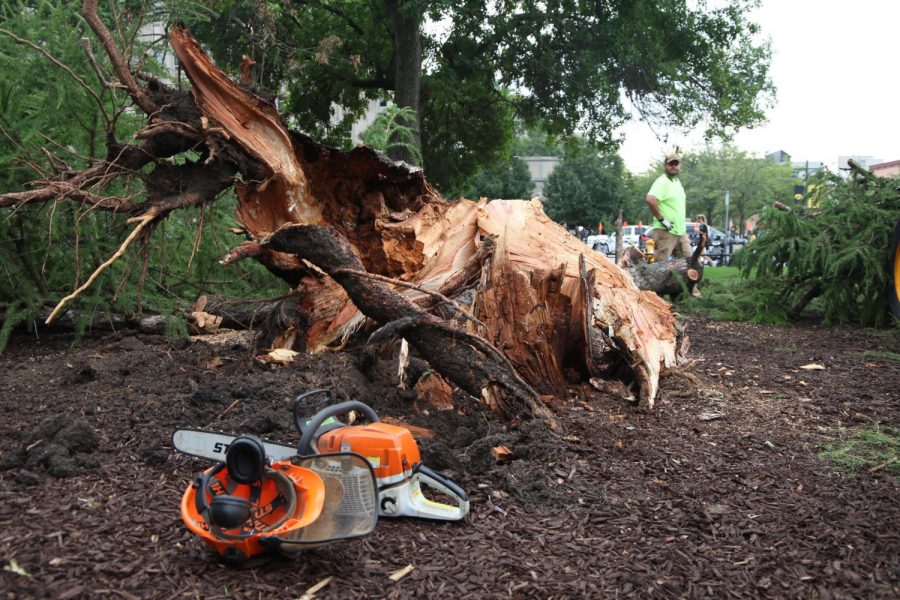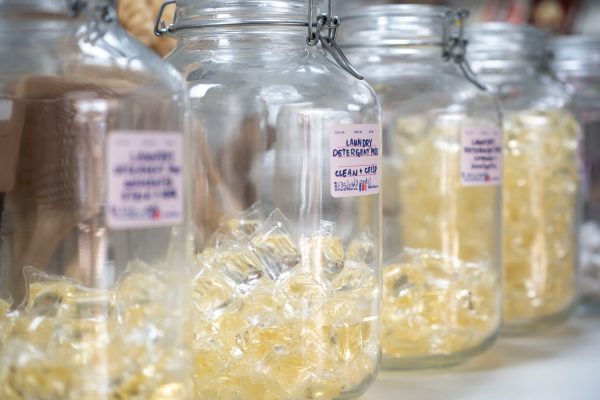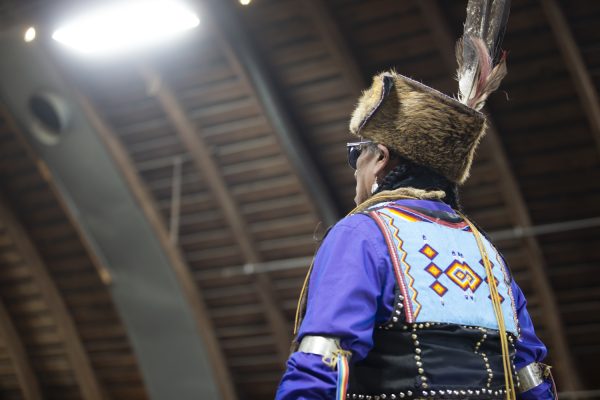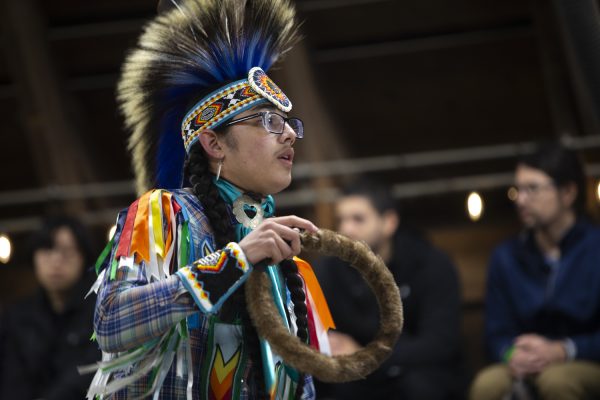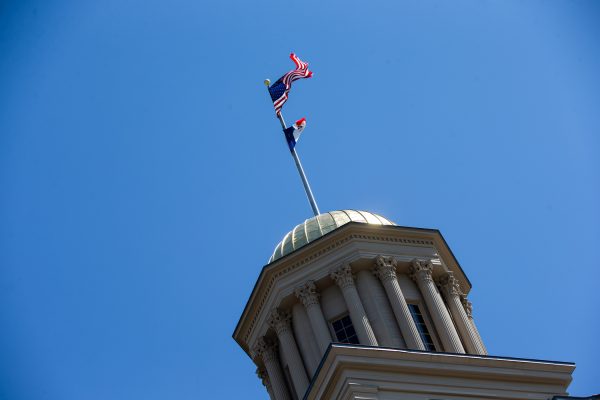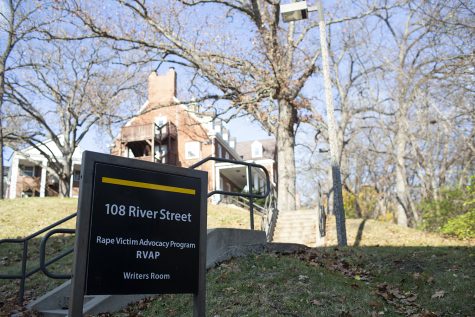‘It had a real grace to it’: UI says goodbye to quirky but loved Pentacrest tree
One of the most iconic trees on the University of Iowa’s Pentacrest fell in a thunderstorm Monday night.
September 10, 2019
In the fury of a vicious thunderstorm late Monday night, the European larch on the University of Iowa Pentacrest, adored by Hawkeyes for years, fell to the ground.
The tree, which was at least 50 years old, was rotting at its base, had lost several limbs to Iowa’s treacherous blizzards over the years, and endured generations of children playing on its enormous, low-hanging limbs.
“It was such an iconic tree. It was so inviting, perfect for photos and exploration of nature and kids and people with their hammocks by it,” Pentacrest Museums communications coordinator Jessica Smith said. “I couldn’t think of another tree on campus that has such a personality.”
Its remaining limbs were sparse, but a single giant arm a few feet off the ground extended toward the sidewalk where thousands of students would pass by each day. Spectators at annual Pentacrest events such as Jazz Fest and the Homecoming concert often sat under the tree on its awkwardly long low branch, or lounged on the ground beneath it for shade.

A European Larch tree is seen fallen on the Pentacrest on Tuesday, Sept. 10, 2019. (Katie Goodale/The Daily Iowan)
“People came to appreciate its oddness,” UI Senior Presidential Writer/Editor Thomas Dean said. Dean published an essay in 2008 mourning the loss of many of the tree’s branches to an ice storm in 2007. He reshared the essay in a Facebook post on Tuesday, and said his sentiments today are similar to what he felt 12 years ago.
Its peculiar appearance not only made it hard to miss, but also made it special. Larches belong to a unique category of trees called deciduous conifers, meaning they have cones like pines, spruces, and other conifers, but they also turn gold in the fall and lose their needles in the winter, like deciduous trees lose their leaves.
UI biology professor Erin Irish said the Pentacrest larch has intrigued her for the 30 years she has been in Iowa City, so she stopped by the scene on Tuesday morning to see the fallen tree.
“It was the most attractive tree — it just had the most interesting curves to its trunk … it almost looked like it moved,” she said. “It had a real grace to it.”
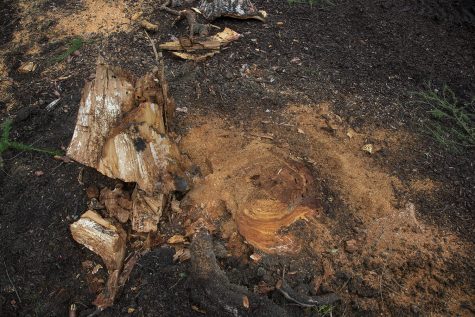
A European Larch tree is seen fallen on the Pentacrest on Tuesday, Sept. 10, 2019. (Katie Goodale/The Daily Iowan)
Its curves likely came from ever-changing upward growth as shade patterns might have changed around the tree over the years due to neighboring trees coming and going. She hopes to figure out exactly how old the larch was from photos she took of its stump, though the rot that had taken over the trunk makes it difficult to count tree rings.
What fascinated Irish most, though, was its magnificent low-hanging branch. To illustrate how remarkable the branch was, she described it as holding a brick straight up or straight ahead — the latter being much more strenuous.
When she visited the fallen tree this morning, she looked at the rings on that branch. The bottom side of the rings were larger, indicating that the tree was responding to gravity and growing asymmetrically to compensate for its low, heavy branch.
Assistant Manager for Landscape Services Shawn Fitzpatrick said the tree’s remains were chipped up and taken to a landfill Tuesday morning. Someday, he hopes that there can be a system in place to take remains of significant campus trees and turn them into knick knacks or otherwise repurposing them into something meaningful, but the larch was in poor condition and would not have been easy to repurpose.
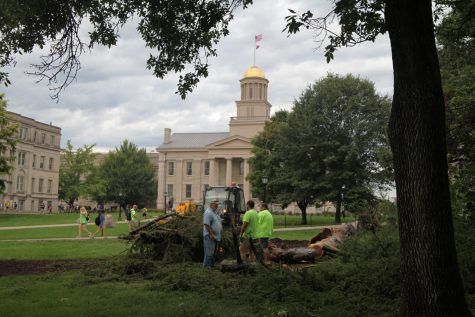
“We enjoyed it as long as we could,” Fitzpatrick said.
The UI values its tree population, as seen through its recognition as a Tree Campus USA, its investment in maintaining an up-to-date tree database, and planting more trees than it removes each year.
“The trees themselves create an atmosphere here that invites nature up to our front door and provides shade and comfort and a home for the animals,” Smith said. “The Old Capitol Museum is such an iconic building … people come to take photos there and the trees are a part of that experience.”



